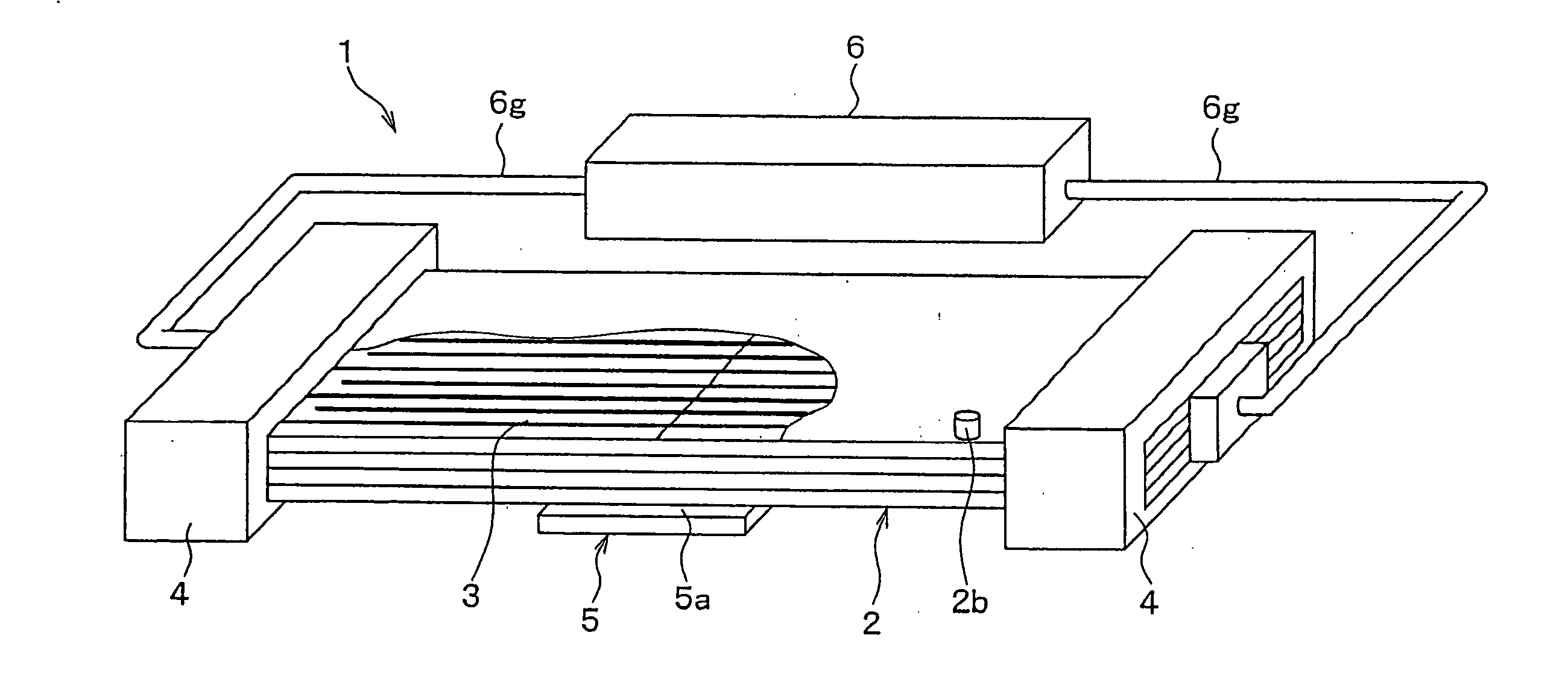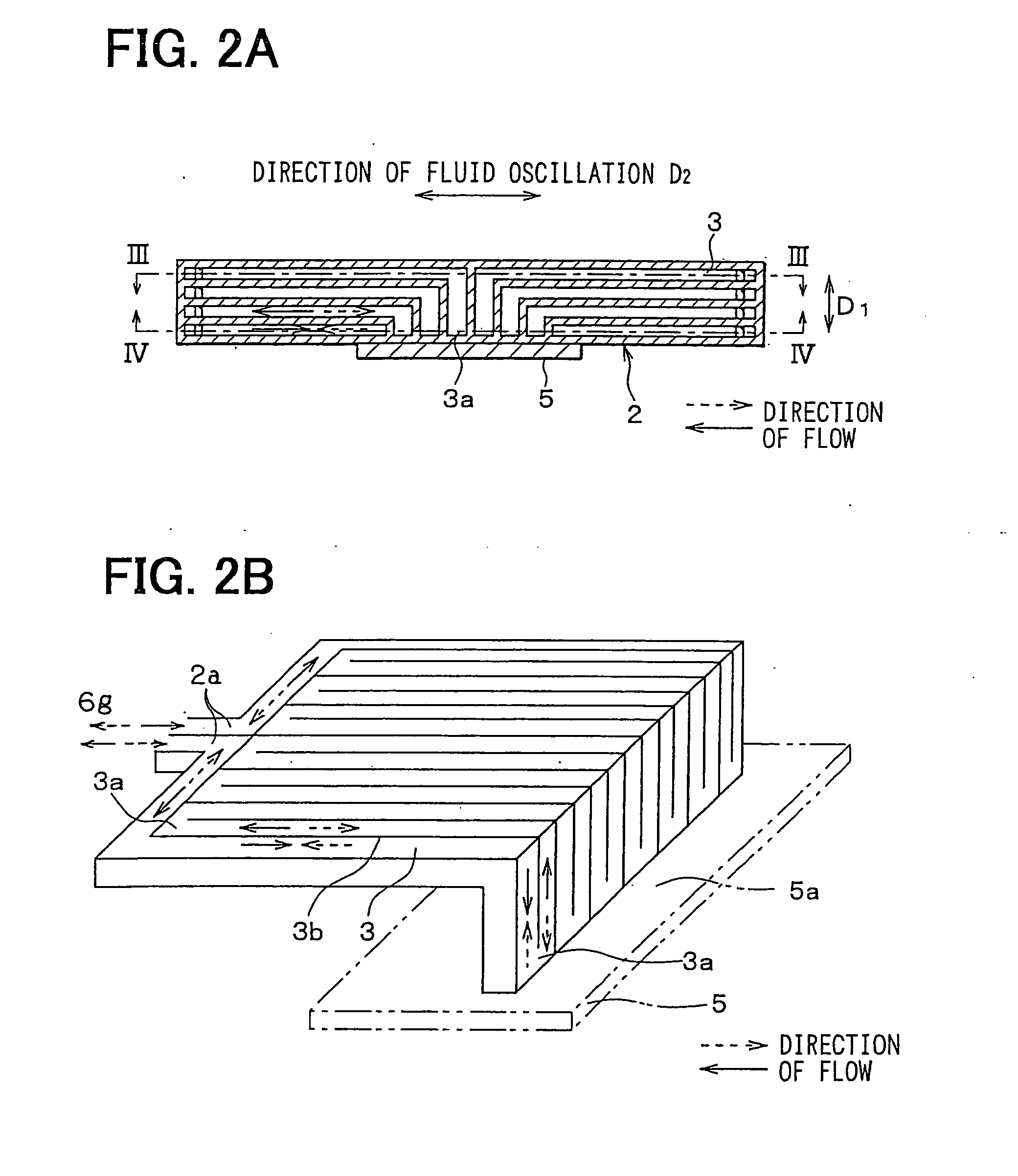Counter-stream-mode oscillating-flow heat transport apparatus
a heat transport apparatus and counter-stream mode technology, applied in lighting and heating apparatus, semiconductor/solid-state device details, laminated elements, etc., to achieve the effect of improving heat transport capability, reducing cost, and reducing manufacturing efficiency
- Summary
- Abstract
- Description
- Claims
- Application Information
AI Technical Summary
Benefits of technology
Problems solved by technology
Method used
Image
Examples
seventh embodiment
[0189]In the fourteenth embodiment, to impart oscillatory displacements to the fluid in a manner such that the fluid located near the heat-generating element 5 be directed toward the heat-generating element 5, a portion of the flow paths 3 adjacent to the heat-generating element 5 is disposed generally perpendicular to the plate surface 5a of the heat-generating element 5 with the other portions being disposed generally parallel to the plate surface 5a of the heat-generating element 5. As shown in FIGS. 14A through 15, this embodiment is configured such that the other portions are also disposed generally perpendicular to the plate surface 5a of the heat-generating element 5 in addition to the portion of the flow paths 3 adjacent to the heat-generating element 5.
[0190]In FIGS. 14A to 14C, since the heat-radiating portion 4 is larger than the portion to which the heat-generating element 5 is attached, an increased angle of inclination is provided relative to the normal direction of th...
eighth embodiment
[0192]In the aforementioned embodiments, heat is exchanged between adjacent flow paths 3 on a plane parallel to the plate surface 5a. However, as shown in FIGS. 16A and 16B, this embodiment allows heat to be exchanged between adjacent flow paths 3 on a plane orthogonal to the plate surface 5a, thereby providing an increased area contributing to heat exchange.
[0193]Furthermore, in the aforementioned embodiments, the fluids in adjacent flow paths 3 are oscillated in the counterflow directions parallel to each other on a plane parallel to the plate surface 5a. However, in this embodiment, the fluids in adjacent flow paths 3 are oscillated in crosswise directions on a plane orthogonal to the plate surface 5a.
[0194]The fluids in adjacent flow paths 3 on a plane orthogonal to the plate surface 5a may be oscillated for heat exchange in the crosswise directions, while the fluids in the adjacent flow paths 3 on a plane parallel to the plate surface 5a may be oscillated in the counterflow di...
ninth embodiment
[0196]In the aforementioned embodiments, the heat transport device assembly 2 is nearly a perfect rigid body. However, as shown in FIG. 17, this embodiment is provided with a bounding portion 3b, among the members constituting the flow paths 3, formed of a metal such as an annealed copper having good thermal conductivity. Additionally, portions 3d, separate from the bounding portion 3b, are formed of a soft material such as resin. This resin portion 3d can be recessed to accept the metal thin plate 3b. This construction and these materials allows the heat transport device assembly 2 to be readily bent just like an electric cord, thereby facilitating the implementation of the counter-stream-mode oscillating-flow heat transport apparatus.
PUM
 Login to View More
Login to View More Abstract
Description
Claims
Application Information
 Login to View More
Login to View More - R&D
- Intellectual Property
- Life Sciences
- Materials
- Tech Scout
- Unparalleled Data Quality
- Higher Quality Content
- 60% Fewer Hallucinations
Browse by: Latest US Patents, China's latest patents, Technical Efficacy Thesaurus, Application Domain, Technology Topic, Popular Technical Reports.
© 2025 PatSnap. All rights reserved.Legal|Privacy policy|Modern Slavery Act Transparency Statement|Sitemap|About US| Contact US: help@patsnap.com



